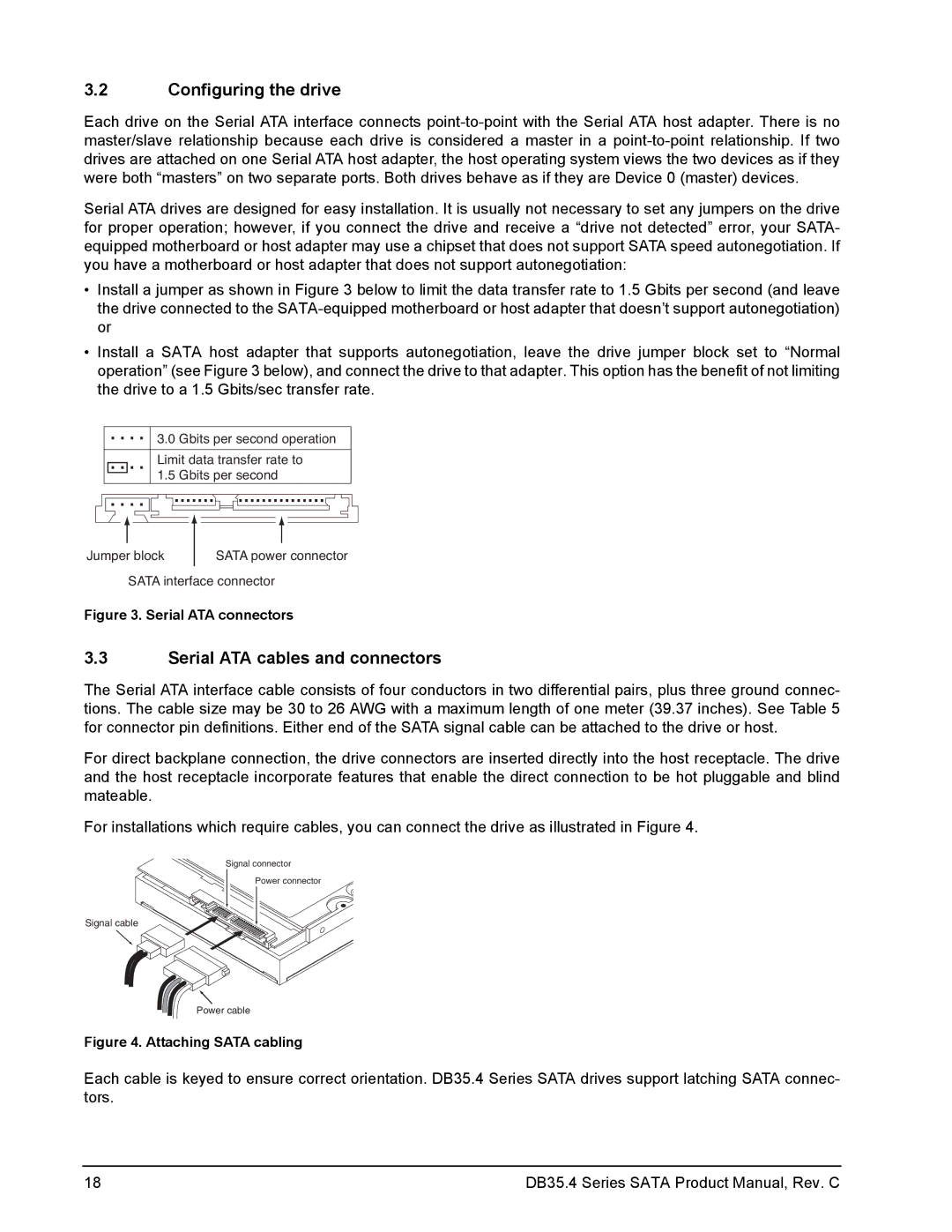DB35.4 specifications
The Seagate DB35.4 series of hard disk drives (HDDs) represents a significant advancement in data storage solutions for digital video recording and other demanding applications. Designed specifically for use in DVRs, NVRs, and related multimedia production environments, the DB35.4 drives are tailored to meet the rigorous requirements of streaming and recording high-definition video content.One of the standout features of the DB35.4 series is its optimized design for continuous operation. These drives are built to handle workloads that involve constant read and write cycles, making them ideal for multi-channel recording setups. With a Mean Time Between Failures (MTBF) rating of 1.2 million hours, the drives ensure reliability and durability, essential for critical applications in broadcasting and surveillance.
The DB35.4 series supports advanced technologies, including native command queuing (NCQ), which enhances performance by allowing multiple read and write commands to be processed simultaneously. This results in improved data transfer rates and reduced latency, which are vital for applications requiring swift access to stored content. With capacities ranging from 250 GB to 2 TB, the drives provide ample space for storing extensive video libraries.
In terms of performance, the DB35.4 features a rotational speed of 7200 RPM, combined with a SATA interface that enables high-speed data transfers. The drives usually come equipped with 8 MB or higher cache memory, further boosting their efficiency during heavy data loads. This ensures that users experience smooth playback and recording, minimizing the risk of dropped frames or buffering.
Energy efficiency is another key characteristic of the Seagate DB35.4 series. Designed with power management in mind, these drives consume less energy during operation while still delivering optimal performance. This not only reduces operational costs but also contributes to a more environmentally friendly solution for users looking to maximize their storage capabilities without excessive power consumption.
In summary, the Seagate DB35.4 HDDs stand out for their reliability, performance, and efficiency. With their specialized design for multimedia applications, advanced technologies like NCQ, and a focus on energy savings, the DB35.4 series remains a preferred choice for businesses and individuals aiming to optimize their digital storage solutions in a demanding video-centric world.

